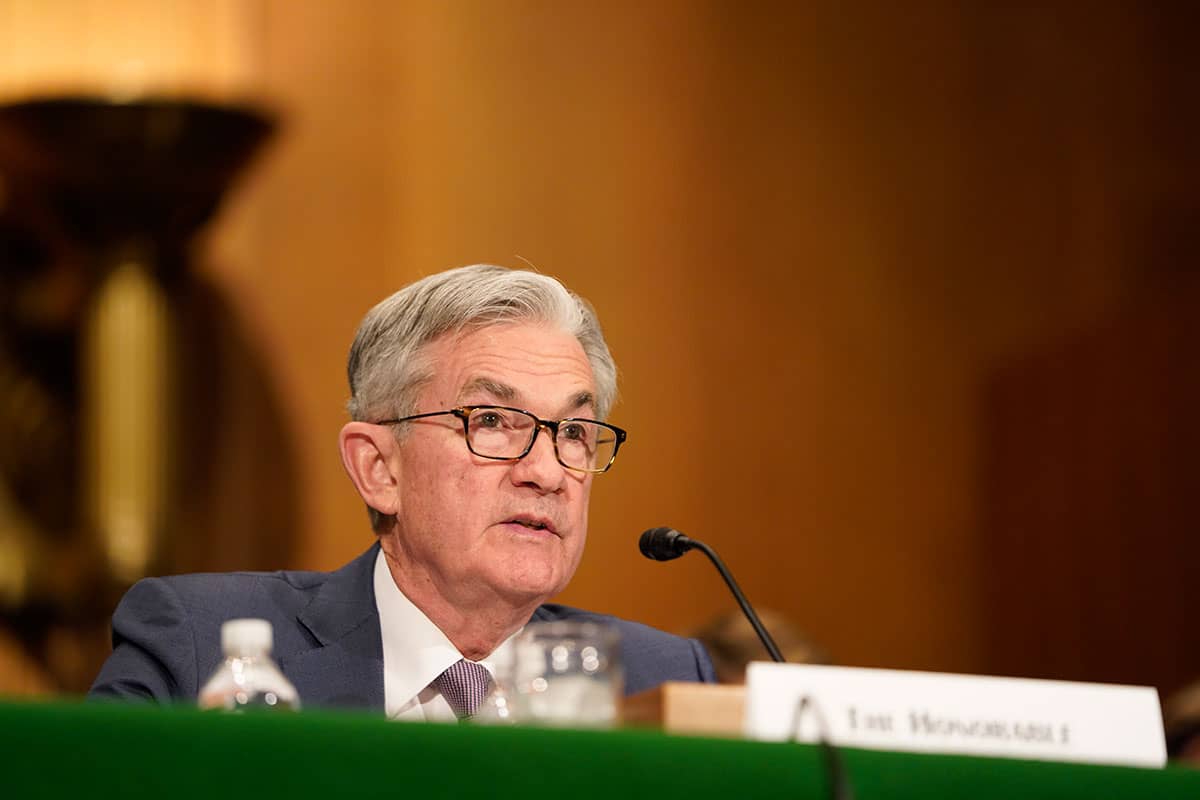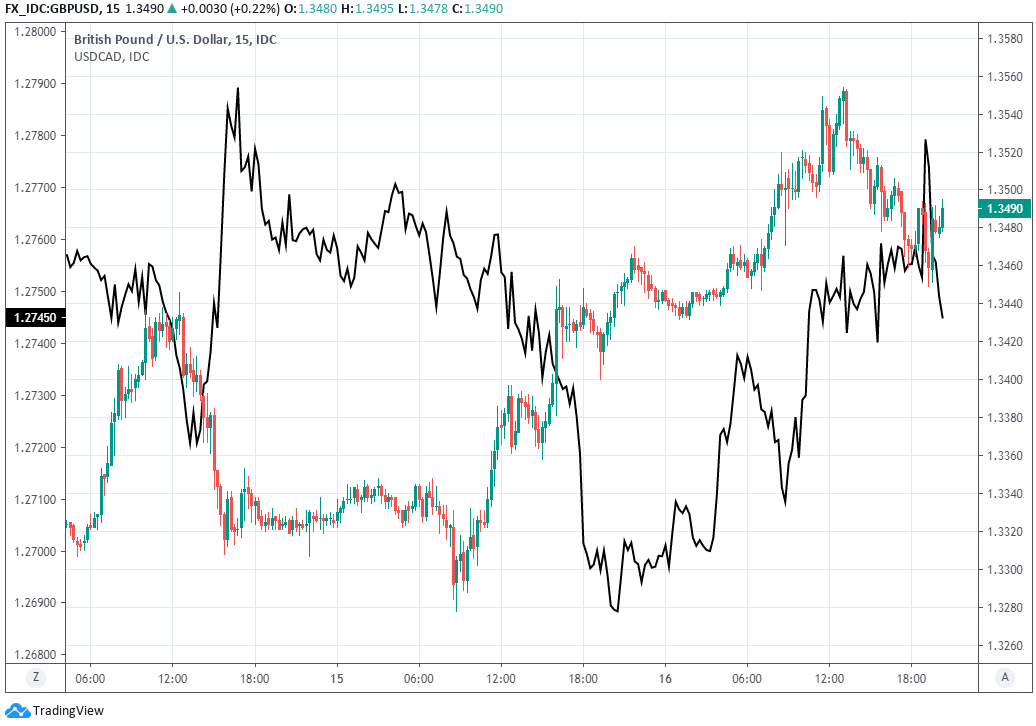Federal Reserve Lifts U.S. Dollar after Half-hearted Rescue Effort in December
- Written by: James Skinner
-

Above: Federal Reserve Chairman Jerome Powell. Image © Federal Reserve.
- GBP/USD spot rate at time of writing: 1.3456
- Bank transfer rate (indicative guide): 1.3111-1.3205
- FX specialist providers (indicative guide): 1.3281-1.3389
- More information on FX specialist rates here
The Federal Reserve (Fed) gave a broad but temporary lift to a bruised U.S. Dollar on Wednesday when it made what some economists perceived as an almost half-hearted attempt at aiding the world's largest economy in its battle with a third and largest wave of coronavirus infections to date.
Federal Open Market Committee members voted in December to leave the Fed Funds rate range unchanged at between 0% and 0.25%, in line with market expectations, while also deciding to continue buying "at least" $80bn per month of U.S. government treasuries and $40bn of mortgage bonds under its quantitative easing programme.
The bank added to its regular statement when appending to the decision some guidance about the likely duration of the quantitative easing programme, which is set to continue "until substantial further progress has been made toward the Committee's maximum employment and price stability goals."
But the Fed didn't set out an intention to alter the weighted-average-maturity of the bonds it buys as had been discussed at November's meeting, or take any other decision except to also extend the duration of its emergency and one-off U.S. Dollar swap lines with a range of central banks.
"Slightly less dovish than expected Fed statement on the surface, because it lacked commentary around some people’s expectations for a WAM extension to QE," says Eric Bregar, head of FX strategy at Exchange Bank of Canada. "US yields and USD knee jerked higher as a result."
Above: Pound-to-Dollar rate shown alongside USD/CAD (black line, left axis) at 15-minute intervals.
By the time of the announcement the decision was a closer call than it appeared back in November, in no small part because of success in the development of a coronavirus vaccine, but range of analysts and clearly some in the market had either anticipated the Fed would do more to support the economy, or were mindful of the risk that it might.
The U.S. has been grappling with an increasingly large third wave of coronavirus infections since late summer which has seen cities and states reclosing some businesses and ordering new 'lockdown' for households ever since the November election.
With that as the backdrop, some had anticipated that it might seek to do more this week, leading to a rise in the U.S. Dollar and bond yields following the decision, although gains didn't last for long after Fed Chairman Jerome Powell said at a press conference afterward that the bank has "flexibility to provide more accommodation" and that "no one should doubt that it won't provide accommodation until the job is well and truly done."
"We had hoped that the Fed would increase the weighted average maturity," says Ian Shepherdson, chief economist at Pantheon Macroeconomics. "In short, this is a micro-easing, which likely would have been more convincing if the Fed had taken the opportunity to emphasize how much weaker the economy now looks in the near-term. But the real missed opportunity is the decision to leave the pace and composition of QE unchanged. We appreciate that the start of vaccination makes the 2021 outlook brighter - not that it gets a mention here - but in the near term the economy needs all the help it can get."
Above: Dollar Index shown alongside Euro-to-Dollar rate (black line, left axis) at 15-minute intervals.
Powell half-heartedly defended the FOMC's decision to do little in December when saying at the press conference that the bank had overestimated the impact the earlier second wave had on the economy, before also acknowledging that the current wave of infections is "much larger." It is however and after all, government responses to infections that have dictated economic outcomes thus far rather than simply infection numbers on their own.
"We expect the Fed to extend the weighted average maturity (WAM) of purchases in early 2021 while reducing the overall volume of purchases, akin to the Bank of Canada's move that was looked favorably upon in the previous meeting's minutes, and thereby working to contain any upwards pressure on longer-term yields that they judge to be a possible roadblock to the recovery," says Katherine Judge, an economist at CIBC Capital Markets.
In addition to new guidance the Fed also extended the duration of it March's temporary, emergency swap lines worth $60bn of sometimes-scarce U.S. Dollar funding to each of the Reserve Bank of Australia, the Banco Central do Brasil, the Bank of Korea, the Banco de Mexico, the Monetary Authority of Singapore, and the Sveriges Riksbank (Sweden). This was in addition to $30 billion each for the Danmarks Nationalbank (Denmark), the Norges Bank (Norway), and the Reserve Bank of New Zealand.
Above: Dollar Index shown alongside Pound-to-Dollar rate (black line, left axis) at weekly intervals.
Swap lines were instrumental in preventing a recurrence of the viscious and financially-destabilising Dollar surge seen in March when a tidal wave of capital came flooding out of emerging world markets and other investment venues, like stock and even many bond markets, as it became clear that vast parts of the global economy were headed to very same grinding standstill and strict 'lockdown' seen in China's Wuhan City and Hubei province previously.
The March period became known as the 'liquidity crisis' and resulted at its most acute stage in a 3.5% increase for the U.S. Dollar Index within the space of an afternoon. That barometer measures the greenback against the Pound, Euro, Yen, Swiss Franc, Swedish Krona as well as Canadian Dollar and was just 0.17% higher on Wednesday.
"USD continues to sell off with the DXY breaking below 90.40/50 support, now reaching ytd lows at 90.12. The US stimulus bill is near completion, with areas of contention such as state aid and liability protection set aside for the next," says Bipan Rai, North American head of FX strategy at CIBC. "GBP/USD is testing Dec 4th highs at 1.3539. The pair will remain volatile to Brexit headlines."

